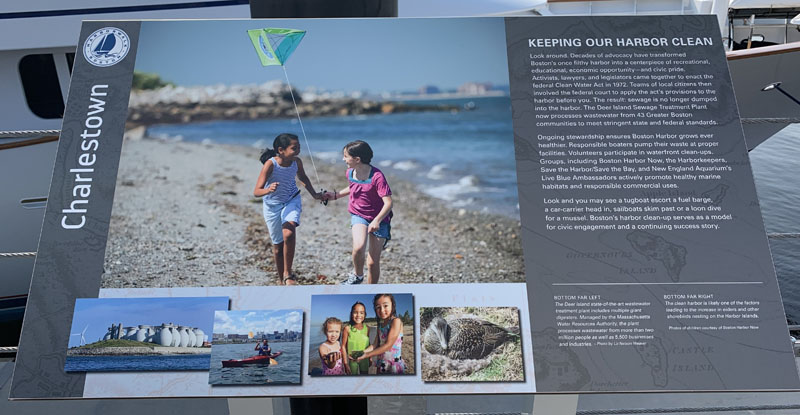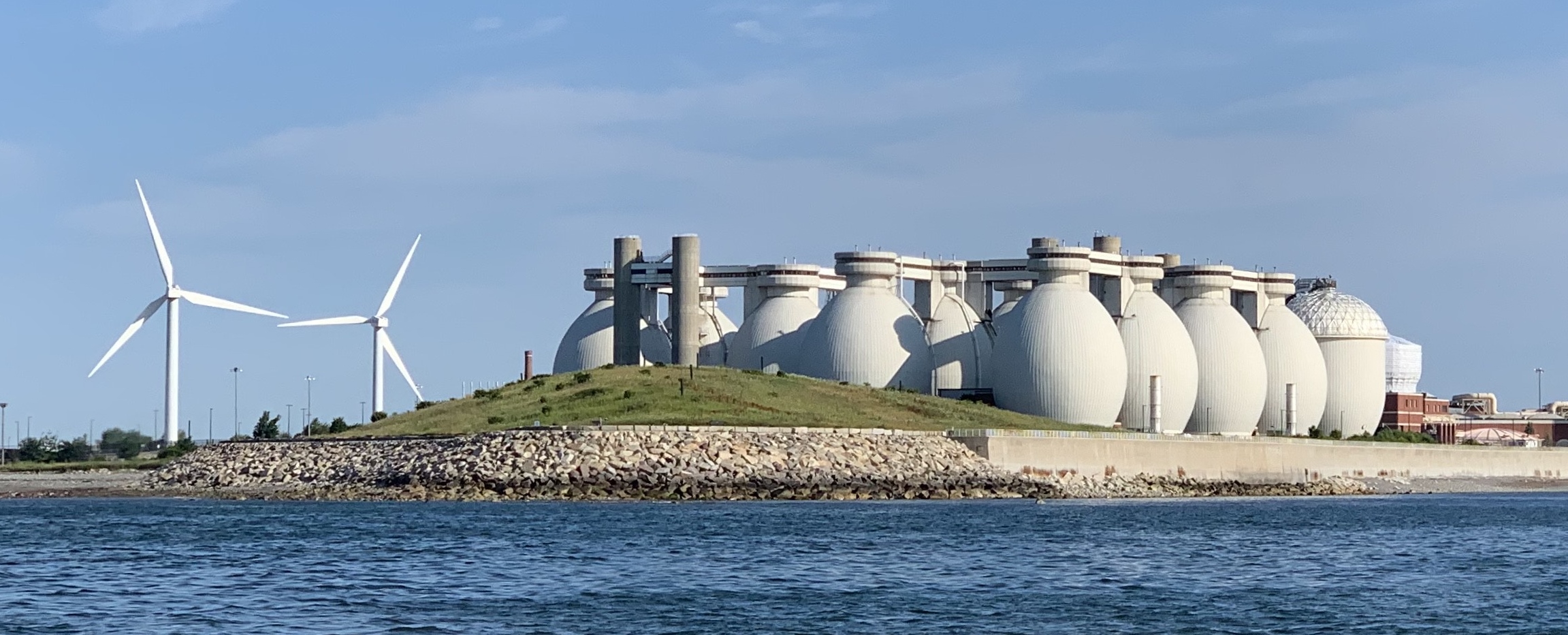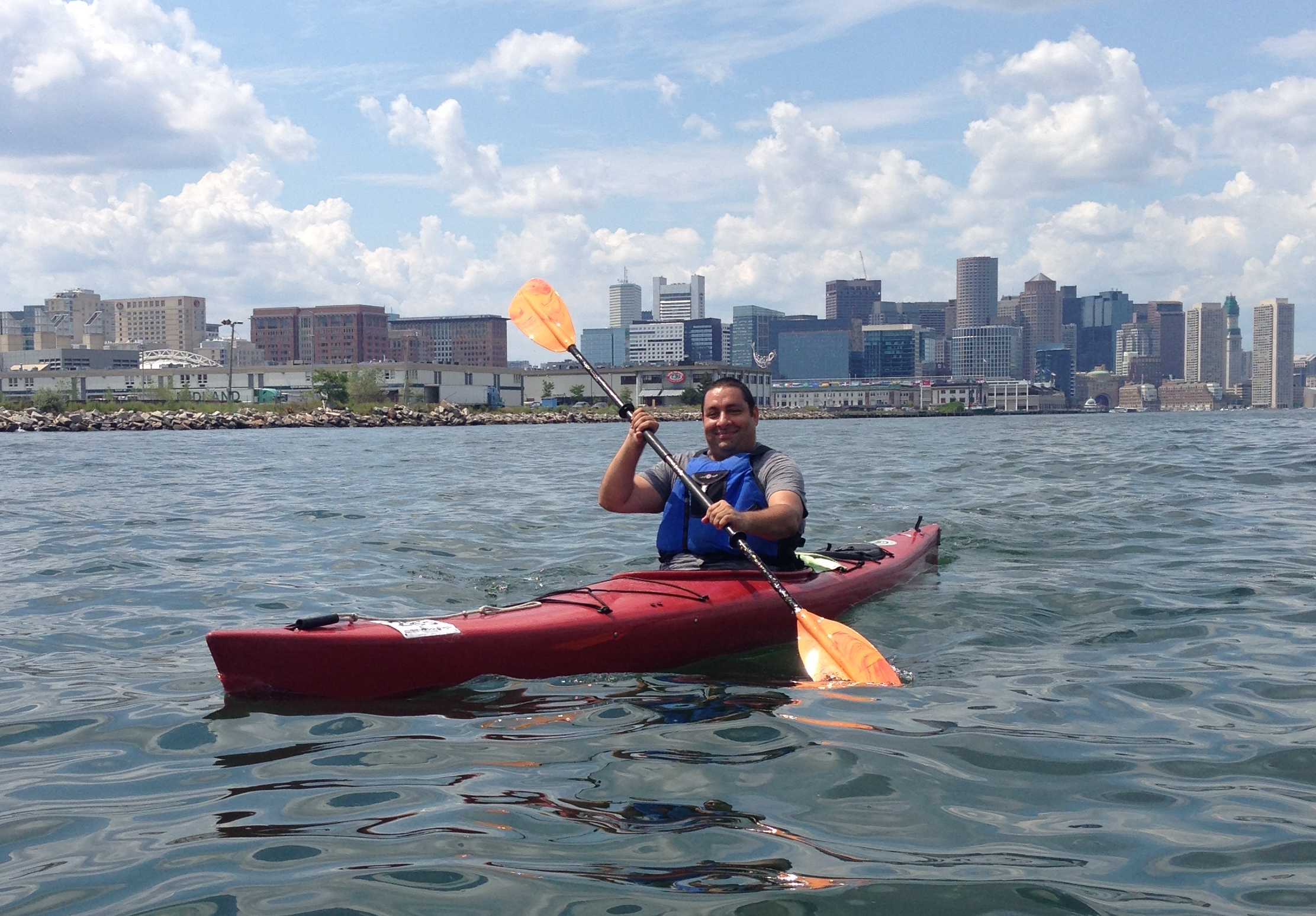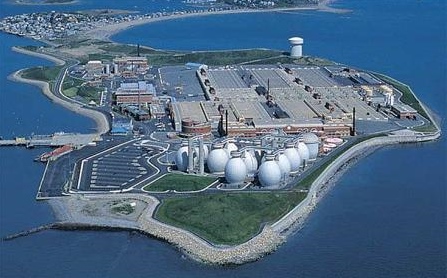Keeping Our Harbor Clean
in Charlestown
Courtesy of Boston Harbor Now
Look around. Decades of advocacy have transformed Boston’s once filthy harbor into a centerpiece of recreational, educational, economic opportunity—and civic pride. Activists, lawyers, and legislators came together to enact the federal Clean Water Act in 1972. Teams of local citizens then involved the federal court to apply the act’s provisions to the harbor before you. The result: sewage is no longer dumped into the harbor. The Deer Island Sewage Treatment Plant now processes wastewater from 43 Greater Boston communities to meet stringent state and federal standards.
Ongoing stewardship ensures Boston Harbor grows ever healthier. Responsible boaters pump their waste at proper facilities. Volunteers participate in waterfront clean-ups. Groups, including Boston Harbor Now, The Harborkeepers, Save the Harbor/Save the Bay, and New England Aquarium’s Live Blue Ambassadors actively promote healthy marine habitats and responsible commercial uses.
Look and you may see a tugboat escort a fuel barge, a car-carrier head in, sailboats skim past or a loon dive for a mussel. Boston’s harbor clean-up serves as a model for civic engagement and a continuing success story.
Sign Location

More …
Resources
- http://www.mwra.state.ma.us/03sewer/html/sewditp.htm
- “The Cleanup of Boston Harbor was surprisingly triumphant,” by John Berg in CommonWealth, Aug 1, 2004.
- “After 30 years, court marks Boston harbor cleanup,” by Milton J. Valencia, Boston Globe, Aug 6, 2016.
- Interviews with New England Aquarium Director of Education John Anderson
- Correspondence with Wayne Peterson, Massachusetts Audubon Society
- how the treatment facility works
- climate resiliency plans for MWRA water treatment facility on Deer Island
- https://www.savetheharbor.org/
- https://www.harborkeepers.org/
- Anderson Cabot Center for Ocean Life at the New England Aquarium
- Environmental lawyer led effort to clean up Boston Harbor
Acknowledgments
- Warm thanks to New England Aquarium Education Director John Anderson for his guidance.
- Our gratitude to the Perkins School for the Blind and David W. Cook for their partnership in creating the audio files.






